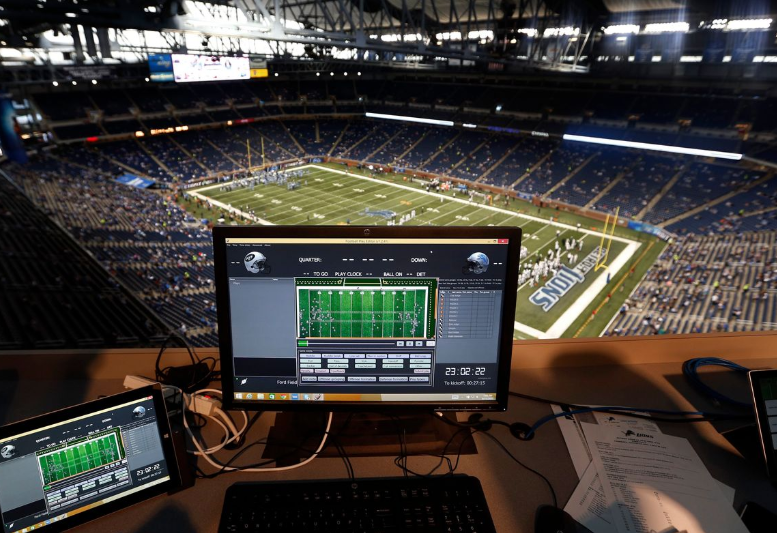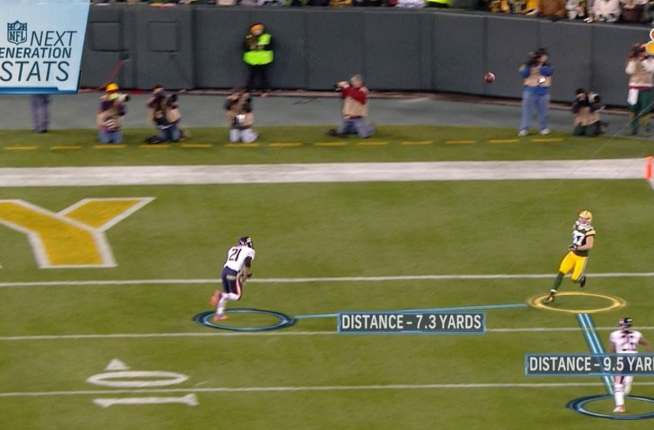Meet The Quants That Are Taking Over The NFL
The NFL’s “Big Data Bowl” caught on in a big way.
Last year, 125 people got together to participate in trying to figure out new insights about the game from poring over mountains of NFL data. This year, 2,038 teams made 32,000 submissions to the event, according to the Wall Street Journal.
And like baseball, which caught analytics fever some years back around the time that Moneyball was released, the NFL now seems set for its own analytics boom.
The numbers are already starting to shift the game, too. More teams are going for it on fourth down and teams are throwing more out of the shotgun, among other decisions being dictated by “rudimentary math”.
At the same time, some GM’s still mock “eggheads and their spreadsheets”, leading to a bit of friendly competition between those who rely on analytics and those who don’t.
To some degree, it seems like a foregone conclusion: this is already the third year that the NFL is using its Next Gen Stats, which collects “granular data about movements on the field that is enabling analyses that were never before possible.”
And because data research is so new, there’s still many inefficiencies that can be taken advantage of when discovered by quants.
Momin Ghaffar, manager of strategic research and development for the Jacksonville Jaguars said: “There’s a lot of low-hanging fruit to be had.”
Ghaffar’s career path has followed the trend: first as manager of analytics for the San Antonio Spurs before defecting to the Jaguars after submitting a paper on analytics to the team.
At last year’s competition, he was one of 11 people hired by NFL teams or other companies looking for analysts.
Prior to Next Gen stats, each game had about 160 rows of data, with each representing one play. Now, tracking data makes 10 observations per second, per player. So instead of 160 rows, there’s about 600,000.
Lopez said: “There’s some knowledge in those 600,000 rows. And teams are trying to figure that out.”
Charlie Gelman, whose work at last year’s Big Data Bowl landed him with a job with the Ravens said: “That’s why I wanted to get into football originally, much more than any other sport. Right now, there’s a huge rush of people trying to get in.”
He was only a sophomore at Duke when he submitted his paper. He also started doing analytics for Duke’s wrestling team and football team.
“Football is huge, but there’s still so few analytics in it,” he said.
The Philadelphia Eagles have the league’s most progressive front office when it comes to analytics, and it helped lead the team to a Super Bowl two years ago against the Patriots. This year, the Ravens have been the most effective with going for it on fourth down, a key centerpiece in the Eagles’ aggressive Super Bowl strategy.
There’s no doubt about it: tracking data can exponentially expand insights for teams. For this year’s “Big Data Bowl”, participants are asked to calculate how many yards a running back should get on any given play. Participants had to create models based on complex factors like position of all players on the field, their speed and other attributes.
Nate Sterken, who previously worked in data science for the federal government and President Obama’s reelection campaign in 2012, is now working on models on how to identify every route a receiver ran on every play so he could analyze which combinations worked best together. And come 2020, he’ll be working for the Cleveland Browns.
Tyler Durden
Thu, 12/26/2019 – 21:50
via ZeroHedge News https://ift.tt/2MyUnYJ Tyler Durden

